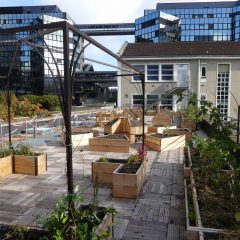Photosynthesis is an essential mechanism for the survival of green plants. Indeed it allows to “feed” the plants but also to purify the air we breathe.
The principle of photosynthesis is to convert carbon dioxide (Co2) into carbohydrate while producing oxygen. For this, the plant needs water, minerals and light. Carbohydrates are essential for the survival of a plant, they are a real source of energy.
The plant absorbs water as well as minerals through its roots and all goes back into its leaves where the Co2 and light are captured. The magic takes place in the chlorophyllian cells, and it is this chlorophyll that gives the green color to the plants. Chlorophyll absorbs the red and blue components of the light. All that remains is the green which it reflects, and that gives its color.
Carbon dioxide is a component of air that, for the most part, is released by pollution (both human and natural). Co2 is produced too much and is warming our planet. Photosynthetic plants (which practice photosynthesis) rid us of this pollution and produce oxygen. Oxygen is the element, contained in the air, the most important to our survival. Indeed, when we breathe, we absorb and reject Co2. This is why without plants we would not be alive. That’s why it’s often said that forests are the lungs of the Earth.
The energy captured by plants in photosynthesis is the primary driver of all natural ecosystems.






